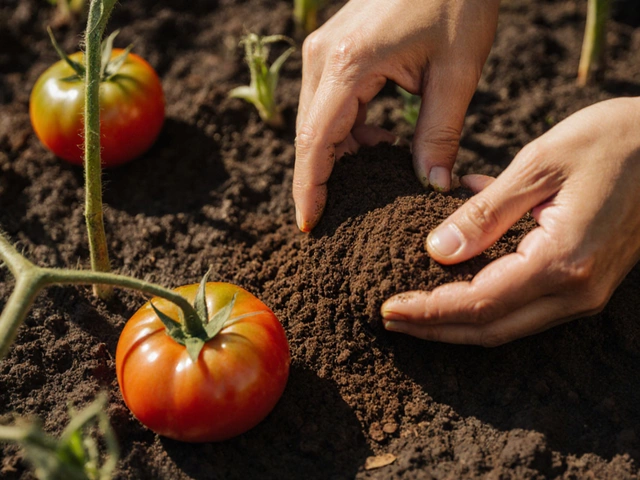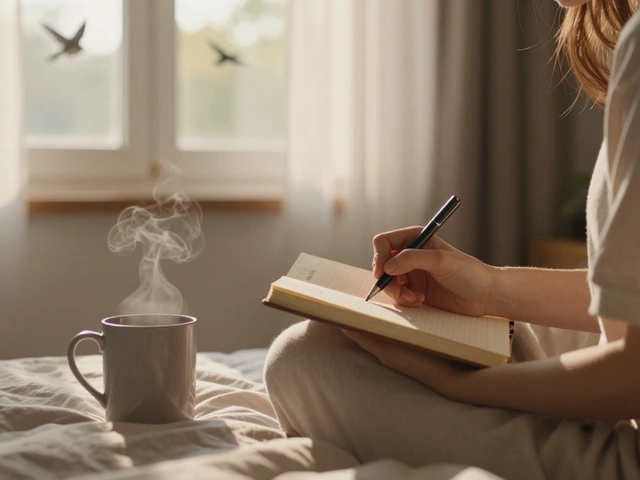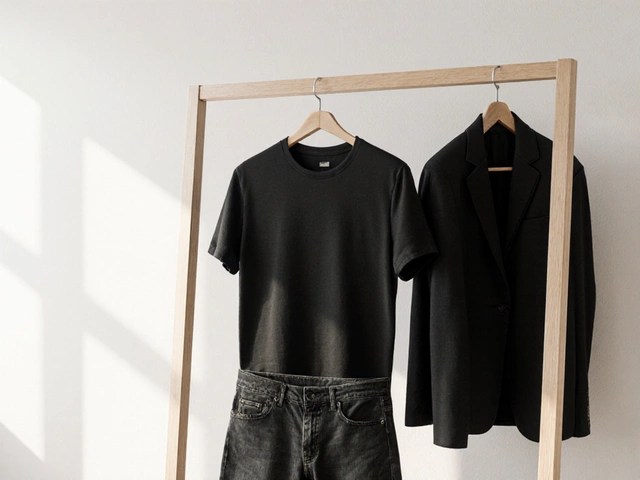Coffee Grounds Compatibility Checker
Check Compatibility
Select your plant type and coffee usage method to see if coffee grounds are suitable.
Select a plant type and usage method to see compatibility results.
Many gardeners swear by dumping leftover coffee grounds around their tomato plants or mixing them into potting soil. You’ve probably heard it too: coffee is a natural fertilizer, it makes soil acidic, and it helps plants grow faster. But does any of that actually hold up? Or is this just another gardening myth passed down like ‘plant beans under the moon’?
What Happens When You Put Coffee Grounds on Plants?
Coffee grounds are mostly organic matter-about 2% nitrogen, 0.3% phosphorus, and 0.6% potassium by weight. That’s not much compared to commercial fertilizers, but it’s enough to matter over time. The real benefit isn’t in the nutrients alone; it’s in how coffee grounds improve soil structure. They help break up heavy clay soils, increase drainage, and encourage earthworm activity. Earthworms love coffee grounds. They eat them, digest them, and leave behind nutrient-rich castings that plants can use.
But here’s the catch: fresh coffee grounds are acidic, with a pH around 5.0 to 6.0. Most plants prefer slightly acidic to neutral soil-between 6.0 and 7.0. So if you dump a big pile of fresh grounds around your blueberries (which love acid), you’re doing them a favor. But if you pile them around your lavender or rosemary, you’re making the soil too acidic for them. That’s why spreading a thin layer-no more than half an inch-is better than burying your plants in coffee.
Does Coffee Stimulate Plant Growth?
There’s no solid evidence that coffee directly makes plants grow faster or bigger. A 2018 study from the University of Florida tested tomato plants grown with coffee grounds, brewed coffee, and plain water. The plants watered with coffee didn’t grow taller or produce more fruit than the control group. The ones fed coffee grounds showed a slight increase in leaf greenness, but only when the grounds were composted first.
That’s the key: composted coffee grounds work. Fresh ones don’t. Why? Fresh grounds can form a dense, water-repelling crust on top of the soil. They also contain small amounts of caffeine, which can inhibit seed germination and stunt young roots. Caffeine is a natural herbicide. It’s why coffee plants grow so well in their native habitat-they suppress competing plants around them. So if you’re trying to grow seedlings, keep the coffee grounds away from the soil surface.
Which Plants Like Coffee Grounds? Which Ones Don’t?
Not all plants react the same way. Some thrive with a little coffee boost. Others shut down.
- Plants that respond well: Blueberries, azaleas, rhododendrons, hydrangeas, roses, carrots, radishes, and tomatoes. These all prefer slightly acidic soil and benefit from the slow release of nitrogen.
- Plants that avoid coffee grounds: Lavender, rosemary, cacti, succulents, and most orchids. These plants need well-drained, alkaline soil. Coffee grounds can push the pH too low and cause root rot.
It’s not just about pH. Coffee grounds can also attract pests like slugs and ants if left in thick layers. And if you use them as mulch without mixing them into the soil, they can block air and water from reaching roots.
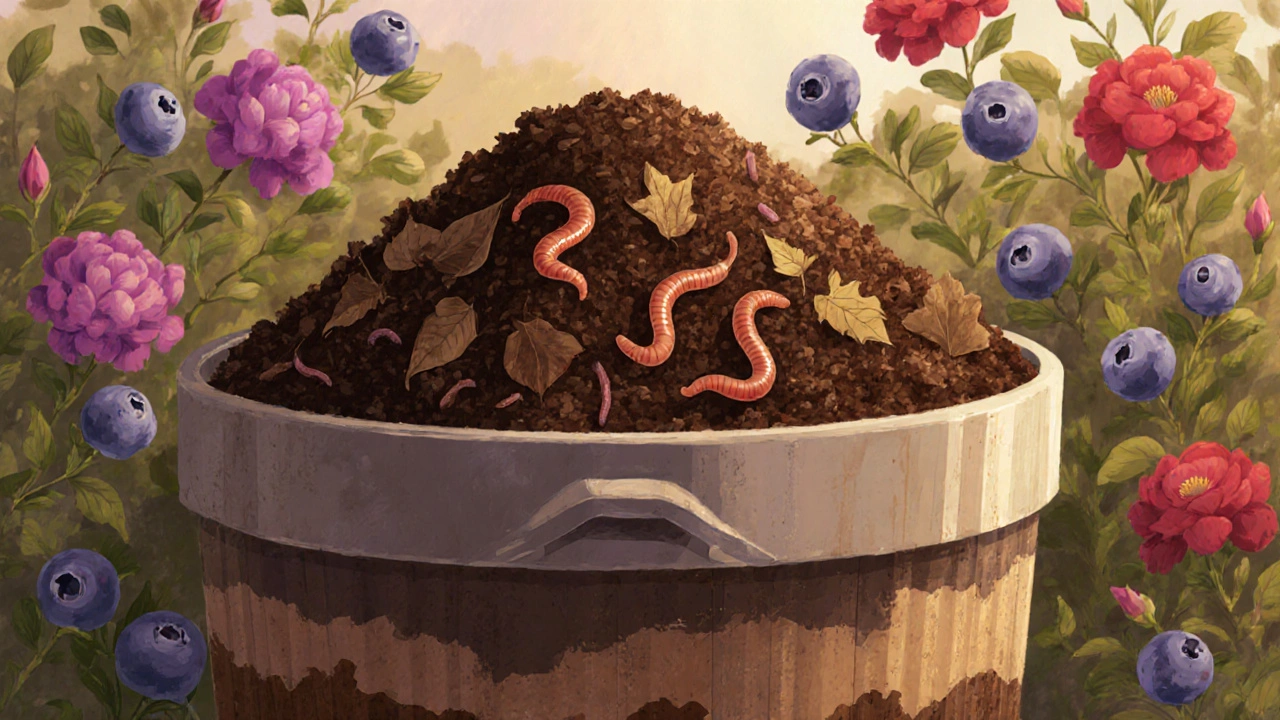
How to Use Coffee Grounds the Right Way
There’s a simple, safe method that works for most home gardeners:
- Collect used coffee grounds and let them dry out on a tray for a day or two. This stops mold and reduces acidity.
- Mix them into your compost pile-about 1 part coffee grounds to 4 parts brown material like leaves or shredded paper.
- Once composted, spread a thin layer (1/4 to 1/2 inch) around the base of acid-loving plants.
- Or, brew weak coffee (one part coffee to three parts water) and use it to water plants once every two weeks. Never use strong coffee.
Never use coffee grounds as a standalone fertilizer. They’re not a magic solution. Think of them as a soil conditioner, not a nutrient bomb.
What About Coffee Water? Can You Water Plants With Leftover Coffee?
Yes-but only if it’s black, cold, and diluted. A cup of black coffee diluted in a gallon of water won’t hurt most plants. It’s basically weak tea with a hint of nitrogen. But don’t pour in your latte. Milk, sugar, and flavorings can attract fungi and pests. And never use coffee that’s been sitting out for days-it can ferment and smell bad.
Some people claim their succulents love coffee water. That’s unlikely. Succulents need sandy, alkaline soil. Even diluted coffee can slowly acidify their environment, leading to root stress. Stick to plain water for those.
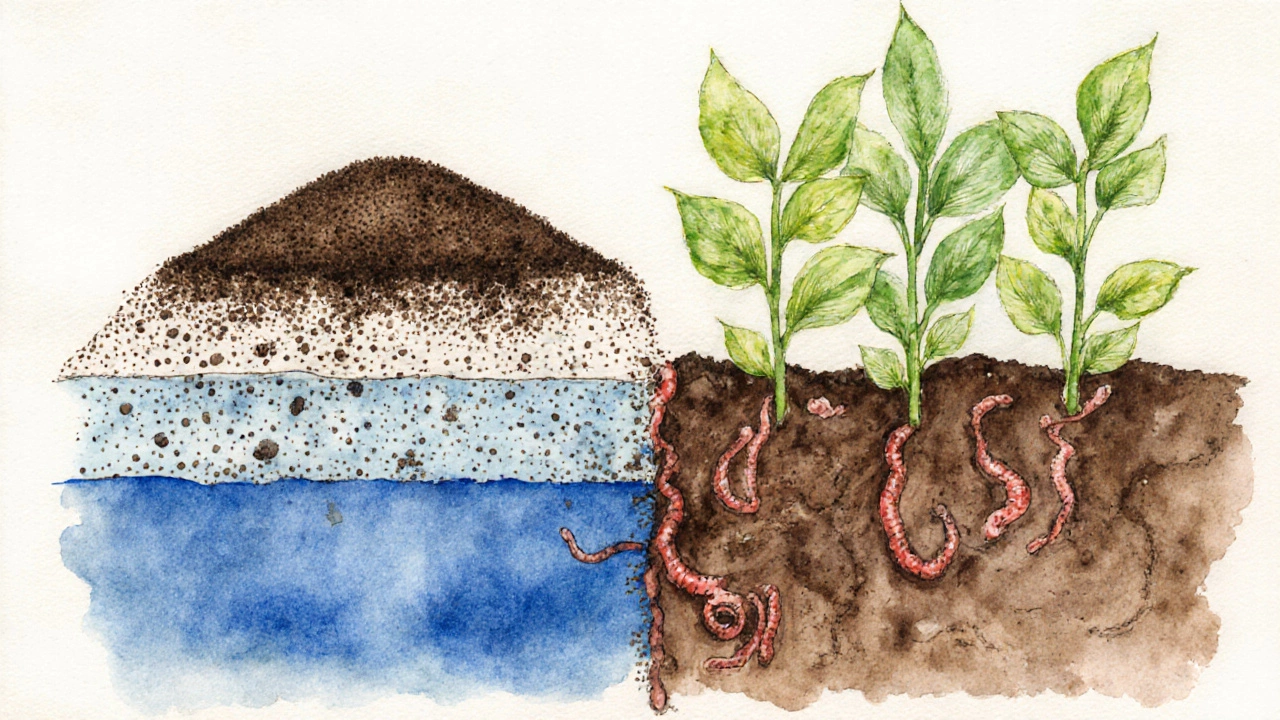
Myth Busting: Coffee Grounds Repel Slugs and Pests
You’ve probably read that coffee grounds keep slugs away. The idea is that the gritty texture cuts their soft bodies. But in practice, it doesn’t work well. A 2020 study from Lincoln University in New Zealand tested coffee grounds, eggshells, and copper tape as slug barriers. Only copper tape was consistently effective. Coffee grounds? Slugs crawled right over them.
Same goes for ants and mosquitoes. Coffee grounds might mask scents slightly, but they won’t stop an infestation. If you have a pest problem, focus on removing hiding spots and keeping soil dry-not sprinkling grounds around.
When Coffee Grounds Do More Harm Than Good
Here are three common mistakes gardeners make:
- Using too much: A thick layer of grounds forms a hard crust that blocks water and air. Roots suffocate. Soil becomes waterlogged.
- Using fresh grounds on seedlings: Caffeine and acidity can kill young plants before they even sprout.
- Assuming it replaces fertilizer: Coffee grounds don’t have enough phosphorus or potassium to support flowering or fruiting. You still need balanced fertilizer for tomatoes or peppers.
One gardener in Wellington told me she used coffee grounds every week on her roses. After six months, the leaves turned yellow and the blooms disappeared. She thought the coffee was feeding them. Turns out, the soil pH had dropped to 4.8. She had to lime the soil and start over.
The Bottom Line
Coffee grounds aren’t a miracle cure. They’re a tool. Used right, they can improve soil health over time. Used wrong, they can damage plants.
If you drink coffee daily, don’t throw those grounds away. Compost them. Mix them into your mulch. Use them sparingly on acid-loving plants. But don’t expect them to turn your garden into a jungle overnight.
Plants grow best with balanced soil, consistent water, and proper light. Coffee grounds? They’re a side dish-not the main course.
Can I use coffee grounds as a substitute for fertilizer?
No. Coffee grounds contain only small amounts of nitrogen and almost no phosphorus or potassium. They can’t replace a balanced fertilizer, especially for flowering or fruiting plants. Use them as a soil conditioner, not a nutrient source.
Is it safe to use coffee grounds on indoor plants?
It’s risky. Indoor pots have limited airflow and drainage. Fresh coffee grounds can encourage mold, attract fungus gnats, and compact the soil. If you want to use them, mix a teaspoon into the top layer of soil and monitor for signs of dampness or pests.
Do coffee grounds make soil more acidic?
Fresh grounds are slightly acidic, but composted grounds have a nearly neutral pH. The acidity doesn’t last long in soil. The real impact depends on how much you use and what your soil’s starting pH is. Test your soil before adding anything.
Can I pour cold coffee on my plants?
Yes, if it’s black and diluted-about one part coffee to three parts water. Don’t use coffee with sugar, milk, or flavorings. Even then, use it only once every two weeks. Too much can build up salts and harm roots.
Do coffee grounds help with weed control?
Not really. While caffeine can inhibit seed germination in lab conditions, it doesn’t work reliably in garden soil. Weeds will still grow through coffee grounds. For weed control, use mulch, hand-pulling, or landscape fabric.


